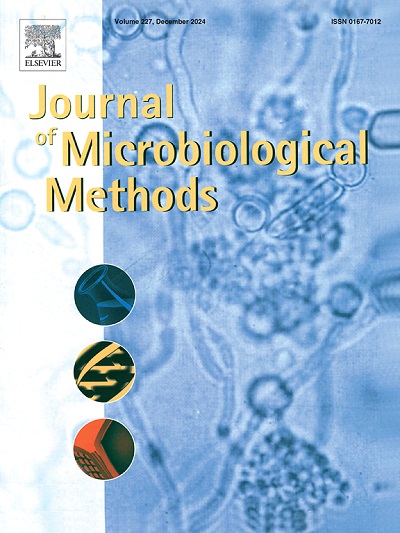Subtractive genomics approach: A guide to unveiling therapeutic targets across pathogens
IF 1.7
4区 生物学
Q4 BIOCHEMICAL RESEARCH METHODS
引用次数: 0
Abstract
Subtractive genomics is an adaptable bioinformatics technique that is used to identify potential therapeutic targets by differentiating essential genes in pathogens and non-pathogenic genes. Since, identification of therapeutic targets and understanding of their structure, function, and role in pathogenesis is important in development of drug design. Therefore, this review will provide a comprehensive look at the subtractive genomics technique which was applied to various pathogens, often highlighting the effectiveness of the methodology in drug target discovery and novel therapeutics development. Tools and software such as BLAST, Roary, and AutoDock Vina are widely utilized in this methodology for various aspects such as, genome comparison, essential gene identification, clustering, subcellular localization, pathway analysis, molecular docking etc. Diseases such as tuberculosis, botulism, staphylococcal infections, ventilator-associated pneumonia, secondary meningitis, gonorrhoea, septicaemia, etc., are among the infectious diseases targeted using subtractive genomics. Comparison of basic principles, tools, and advancements use these subtractive genomics studies, will provide insight into the adaptable nature of this technique and the diversity of pathogens, which have benefited with this methodology into providing successful results. The main focus is on the genome sequencing advancements, annotation and validation through in-silico techniques, to find effective drug targets while, decreasing the possibility of toxicity in the host. We have also discussed the possibility of taking a multi-omics approach and incorporating AI and machine learning to expand on the current data and finding effective therapeutics for helping globally on health challenges.
减法基因组学方法:揭示跨病原体治疗靶点的指南
减法基因组学是一种适应性很强的生物信息学技术,通过区分病原体中的重要基因和非致病基因来确定潜在的治疗靶点。由于确定治疗靶点并了解其结构、功能和在致病过程中的作用对于药物设计的开发非常重要。因此,本综述将全面介绍应用于各种病原体的减法基因组学技术,并重点介绍该方法在药物靶点发现和新型疗法开发中的有效性。BLAST、Roary 和 AutoDock Vina 等工具和软件被广泛应用于该方法的各个方面,如基因组比较、重要基因鉴定、聚类、亚细胞定位、通路分析、分子对接等。结核病、肉毒中毒、葡萄球菌感染、呼吸机相关肺炎、继发性脑膜炎、淋病、败血症等疾病都是减法基因组学的目标传染病。通过比较这些减法基因组学研究的基本原理、工具和进展,可以深入了解这种技术的适应性和病原体的多样性,从而受益于这种方法,获得成功的结果。研究的重点是基因组测序的进展、注释以及通过室内技术进行验证,以找到有效的药物靶点,同时降低对宿主产生毒性的可能性。我们还讨论了采用多组学方法的可能性,并结合人工智能和机器学习来扩展现有数据,找到有效的治疗方法,帮助全球应对健康挑战。
本文章由计算机程序翻译,如有差异,请以英文原文为准。
求助全文
约1分钟内获得全文
求助全文
来源期刊

Journal of microbiological methods
生物-生化研究方法
CiteScore
4.30
自引率
4.50%
发文量
151
审稿时长
29 days
期刊介绍:
The Journal of Microbiological Methods publishes scholarly and original articles, notes and review articles. These articles must include novel and/or state-of-the-art methods, or significant improvements to existing methods. Novel and innovative applications of current methods that are validated and useful will also be published. JMM strives for scholarship, innovation and excellence. This demands scientific rigour, the best available methods and technologies, correctly replicated experiments/tests, the inclusion of proper controls, calibrations, and the correct statistical analysis. The presentation of the data must support the interpretation of the method/approach.
All aspects of microbiology are covered, except virology. These include agricultural microbiology, applied and environmental microbiology, bioassays, bioinformatics, biotechnology, biochemical microbiology, clinical microbiology, diagnostics, food monitoring and quality control microbiology, microbial genetics and genomics, geomicrobiology, microbiome methods regardless of habitat, high through-put sequencing methods and analysis, microbial pathogenesis and host responses, metabolomics, metagenomics, metaproteomics, microbial ecology and diversity, microbial physiology, microbial ultra-structure, microscopic and imaging methods, molecular microbiology, mycology, novel mathematical microbiology and modelling, parasitology, plant-microbe interactions, protein markers/profiles, proteomics, pyrosequencing, public health microbiology, radioisotopes applied to microbiology, robotics applied to microbiological methods,rumen microbiology, microbiological methods for space missions and extreme environments, sampling methods and samplers, soil and sediment microbiology, transcriptomics, veterinary microbiology, sero-diagnostics and typing/identification.
 求助内容:
求助内容: 应助结果提醒方式:
应助结果提醒方式:


